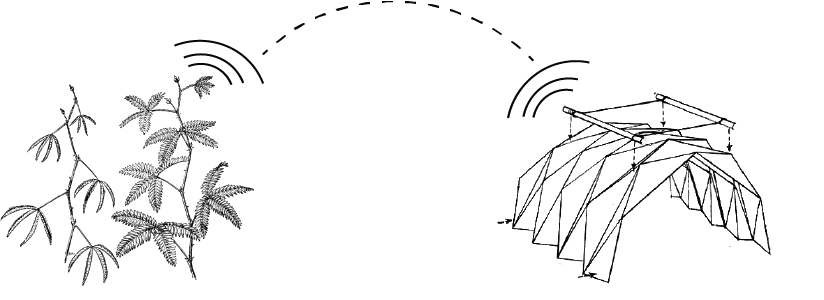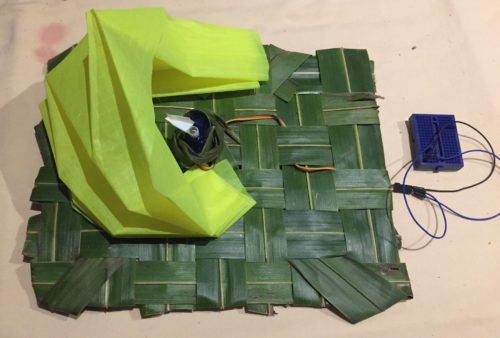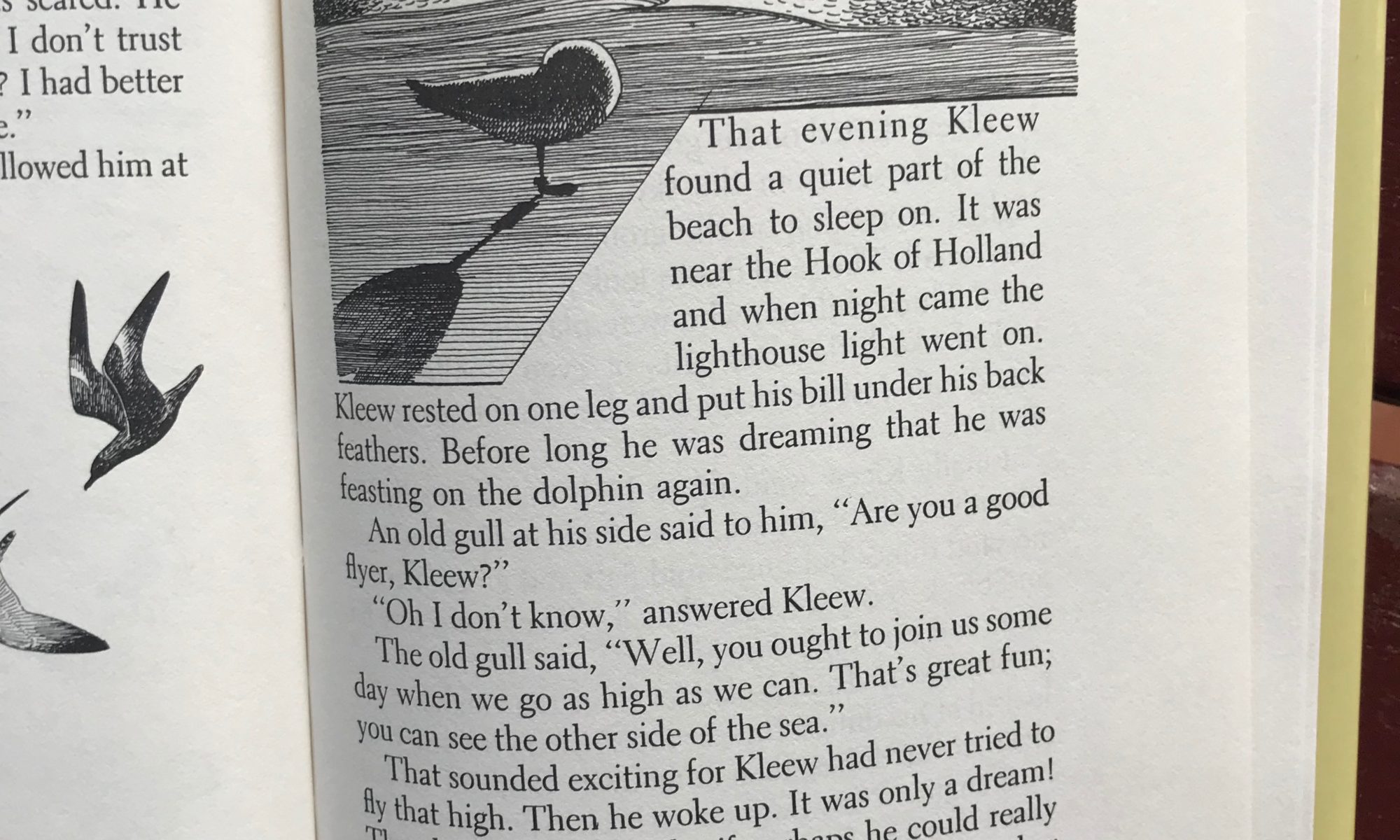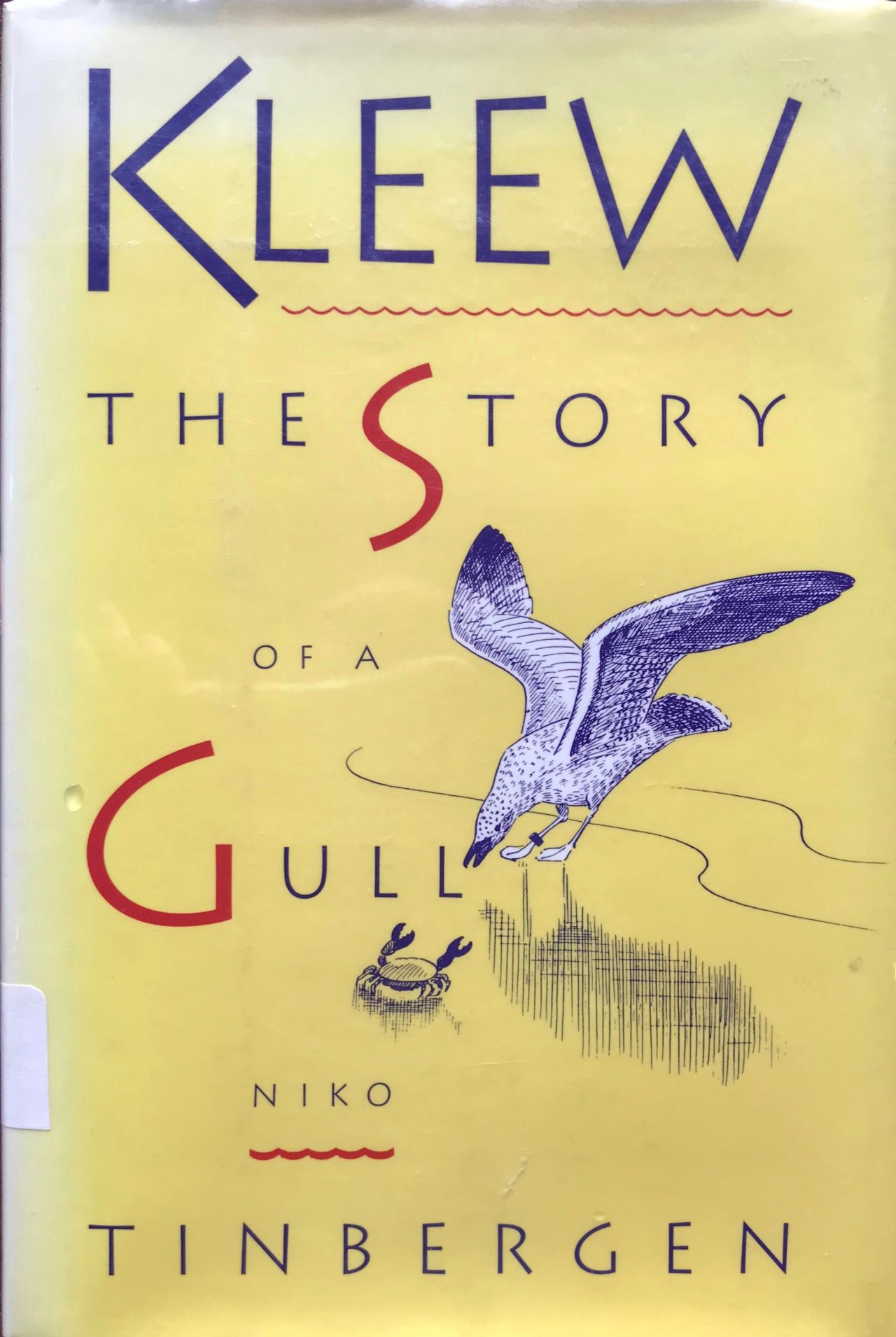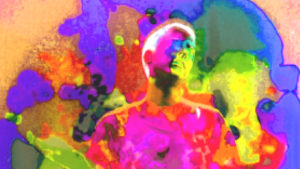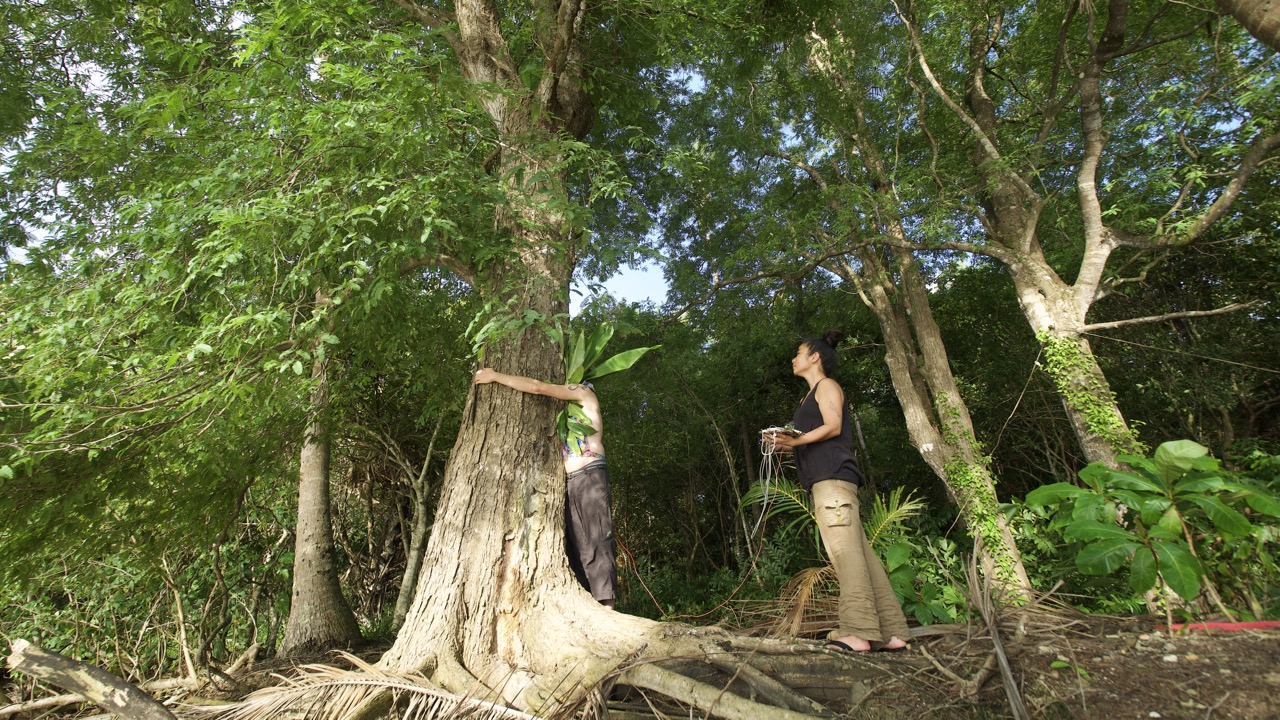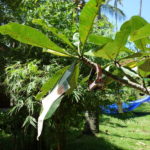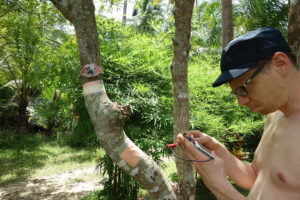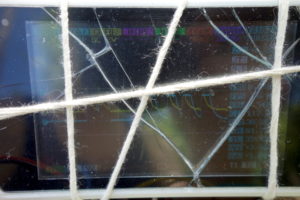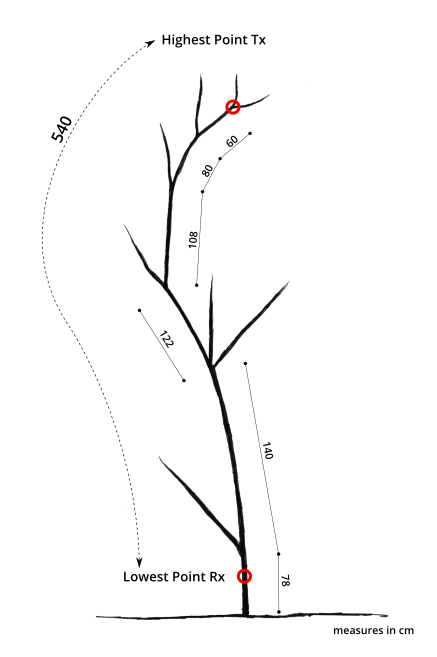My main project at Dinacon was to write a short story inspired by one or more things I saw there. What came out was a story about a marine biologist who finds herself on a tropical island (Dinasaurs will guess it’s Koh Lon) in an unspecified future (Dinasaurs will guess it’s 2561) with a bunch of other scientists and artists. Nobody knows why they’re there and so, in addition to surviving, etc., they’re going to try to figure that out. At Dinacon I wrote about 4,000 words and I realized that I wasn’t nearly finished yet. So, since the thing had a sort of pulpy, classic science-fiction feel to it, I thought I’d serialize it.
Following is Part One. New parts get released on the first of every month and can be read at thatstrangesensation.com. The project will (hopefully) continue until late spring.
Part One
Lately, every time L ascended, she felt on the verge of passing out. About two meters from the surface, she’d find herself needing to grasp onto the inflater nozzle of her BCD in order to remind her body of the task at hand. The water would squeeze her, the churning, womb-like sounds surrounding her and disorienting her. The sun, filtered by the water into individual rays, would hit her like a spotlight, causing her to shield her eyes even as she felt herself hungrily drawing toward it.
And now, once again, she finds herself on the surface, back in her right mind, back on solid ground, which is in fact the choppy surface of the water. The sun steady, the physics standard. Escaped. Just a weird sensation was all.
Ever since she was a beginner diver, she’d felt a whiff of this sensation, but in the past few weeks it’s become stronger every dive. Glancing around to check that the interns she’s been diving with are well, she actually wonders—if she were to let herself go on autopilot during ascension, allow her mind wander even just a bit, would she make it? Or would she pass out, sink to the bottom, die immediately?
What an unscientific thought. Likely she was becoming dizzy as a result of a slight physiological malfunction. An inner ear issue. Or maybe it was simply that this feeling mimicked that of not wanting to wake up from a good dream—it was so peaceful under there after all, so cozy, meditative. Your mind couldn’t be scattered. The water directed your focus, plied your attention toward what it wanted to show you.
“My god, I know how you feel,” her colleague, E, tells her as they unsuit back on the boat. E grunts as her tank clinks into its holder. “Sometimes I just don’t want to leave that world.”
“Maybe that’s all it is,” L replies, but still she can’t explain why the sensation is getting stronger, or—could she say—worse?
**
Two hours later she is entering the day’s data into the Thai governmental database. On that morning’s dive, she and her team of interns completed a fish survey and noted this bounty: forty-five butterfly fish, nine bream, five parrot fish, three angel fish, twenty-five wrasse, forty-five cardinal fish, and one soap fish. Still much fewer snapper than she’d like to be seeing, but the other fishes were doing well.
E types away beside her, probably messaging with a prospective intern: an eager undergraduate or beleaguered graduate student, looking for a suitable research site to host them as well as an exciting Southeast Asian experience. A storm has rolled in. L’s nostrils are alerted to a metallic smell as large raindrops begin to fire away on the roof like they mean to put a hole in it. She feels as if the space has become smaller, as if the world would be happy to do them in.
L leans her forehead on her hand, rubs her temples. “I’ve got a bit of a headache now,” she says. E turns toward her and frowns.
“Take a paracetemol,” E says and, sighing, turns back to her computer. Then she groans. “This student wants to bring his girlfriend. But she’s not going to do any research. She just wants to hang out. ‘She won’t take up another bed,’ he says. ‘I don’t see why she has to pay.’” She rolls her eyes.
L gets up and heads to the kitchen to get a drink of water. On her fourth step, a curtain comes over her vision and all she can see is black. “I’m going blind,” she says as she collapses to the floor.
When she wakes up, E is standing over her. Her face looks old, and the geometry of it evokes an ancient math. L is sure, then, that there have been hundreds of people throughout human history that looked exactly like E.
And then she feels her heart beating faster than it should be beating. Her breath is deep and rapid at the same time, as if she can’t get enough air. But her breath moves in and out, her heart beats, and she can see.
“I’m okay,” she says.
“My god, what is wrong with you?” E yells, her Russian accent really coming out now. “Do you want me to call an ambulance?”
“No, no,” L says. “I just stood up too fast I think. Something a little off with my circulation lately, maybe my blood pressure.”
Maybe I’m fucking pregnant. Fucking pregnant, that’s a funny phrase.
“My god, go home,” E says. “Take the day off.”
“But new students are coming, I have to orient them.”
“Honey, you need to take some time off.”
**
A couple hours later L is in her house, in her bed, inside the mosquito net. Her headache has faded and she feels fine. The storm has passed away, leaving behind thin, shifting, planes of air. She’s reading a dense, poetic book about water and how to interpret it. She’s enjoying the language, but can’t process much meaning from it. She puts the book down and looks at her nightstand. Two pregnancy tests rest there, staring up at her with two blank eyes. No results.
How is this possible?
Pregnancy was unlikely, as she and her various partners on the island always used condoms, but you never knew. So she could understand a positive result and she could understand a negative result but a non-result was perplexing to say the least.
Just a little low on iron from my last period. Something, something like that.
It is barely five o clock. A breeze blows in and a rodent scampers across her roof. The cicadas are quieting down to a low, tired, scratching, only needing to cool themselves down a little in this breezy landscape.
“We will look at water as the subject. Mammals and insects are interesting, but they will only earn their place in this book to the extent that they can explain the behavior, the signs and symbols of water.”
She puts the book down and falls asleep. She sleeps 12 hours. At 5 am a gecko lands on the wall of her bungalow just outside her head and calls out, loud and clear, “unh unh, unh unh, unh unh,” and she jolts awake, thinking the gecko is in her bed, that someone put it in her bed to wake her up, but there’s no one in her house, not even a gecko.
She can’t believe she slept 12 hours.
Maybe I am fucking pregnant.
Suddenly she feels tough and lichenous, tucked away inside herself from whatever might be happening outside.
**
On her motorbike drive to work, a rabid dog lunges at her, causing her to swerve sharply. After driving off a safe distance, she stops and looks back at it. It lies in the middle of the road, sunning.
She gets to the lab before E and spends a quiet morning drinking coffee and looking over the data. The coral bleaching is getting worse and what to do, what to do about that. 50% bleached already and it’s only the beginning of the hot season. At some point in her meager little life, she’d decided that the best thing she could do was have this field station and report the data. Tell the authorities. Alert people in power. Bolster the science, strengthen the argument. Not shut up. Perhaps she should do more.
E enters the room with a clanging of bags and various attachments. Her motorbike helmet falls off her arm and rolls toward L. E’s eyes go wide and she feigns anger. “My god, what are you doing here?”
“What do you mean?” L says.
“I thought you’d take the day off.”
“Oh I’m fine. Got a good night’s sleep.”
E tuts and shakes her head reprovingly.
**
Two hours later they’re diving again. It’s been determined L will be divemaster for two of the more experienced students and E will take the newbies. That way, the experienced students can cover some of the more routine data gathering and L can be free to focus on her pet research project, which tests whether smaller solitary corals are less resistant to bleaching than larger solitary corals.
E’s group lays out the transects while L and her interns hang back and look at coral. She breathes out and sinks closer in to some branching coral, the home of twenty or so baby, white and yellow butterfly fish, who dart in and out like bees. She wishes she were doing a fish survey so that these lovely, tiny fish could be counted. If only their presence could be felt, could matter in the world. But probably they don’t care either way, probably that doesn’t matter to them.
Now it’s time to go and she motions the students to go ahead of her. With the lab’s underwater camera they take a picture of the transect measuring tape every 50 cm. Back at the lab they will need to go through every one of these 300 pictures and identify the coral just to the left of the transect. She removes her underwater slate from her BCD pocket and begins counting. Everything is slow, deliberate, meditative. She breathes slowly. It’s arduous counting all the solitary corals—there are so many. The students’ frog kicks are too frequent, they are going too fast—almost out of her sight now. No matter, they are safe and experienced. She finishes her survey and meets them at the end of the third transect at 50 minutes into their dive. Together they reel up the transects, spiders assuming the thread of their web back into their abdomens. She directs one of the students to take the transect bag and hook it to her kit. The three of them look at each other in the eyes and L makes the hand signal for “let’s ascend”—a thumbs up.
She doesn’t think about that strange sensation. She’s thinking about the data she gathered and about what conclusions she might begin to draw. Slowly, slowly, she swims up, not even needing to think about moving her feet, just willing herself up. And then, at three meters from the surface, once again, it hits.
**
The pressure is more intense this time, the movements of the water like a thousand little flies distracting her attention. The light hits and she feels the heat of the sunrays on her body. The rays form a cone, which twists around her, and she is an unwilling dancer, moving her limbs oddly, floating six inches above an empty stage.
And then she is elsewhere. Her face is naked—no regulator. She feels sand in her nose and on her lips. She sputters, rubs her nose with her index and thumb, sticks out her tongue. Opens her eyes. She’s on the beach. Or a beach, rather. She doesn’t recognize the topography of this beach, with its thick forest, its meters of white sand. All the beaches on her island are short, with sparse, low vegetation and pieces of trash strewn about. This beach is pristine. A breeze tumbles down the white sand, unobstructed by a single other person. She is alone.
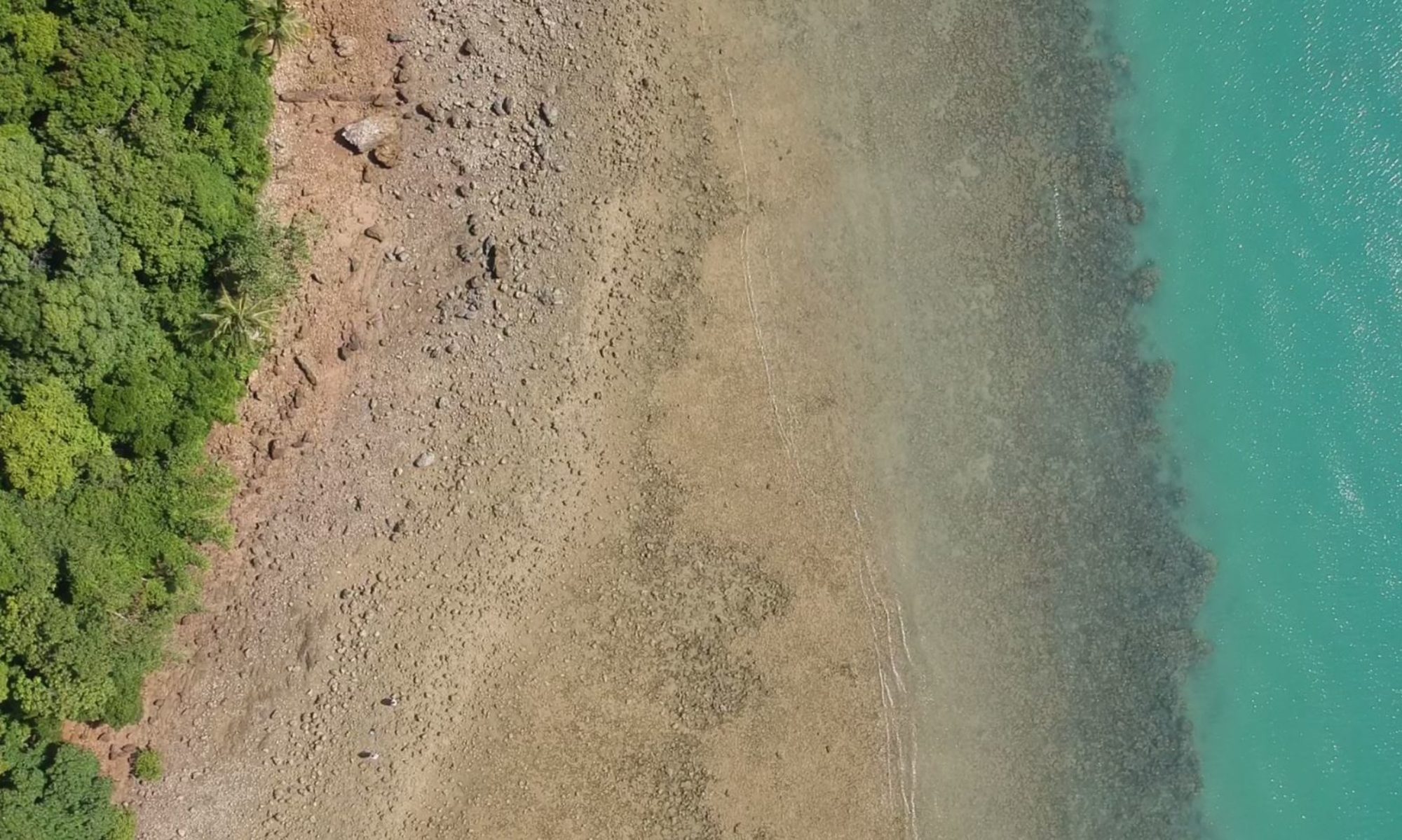











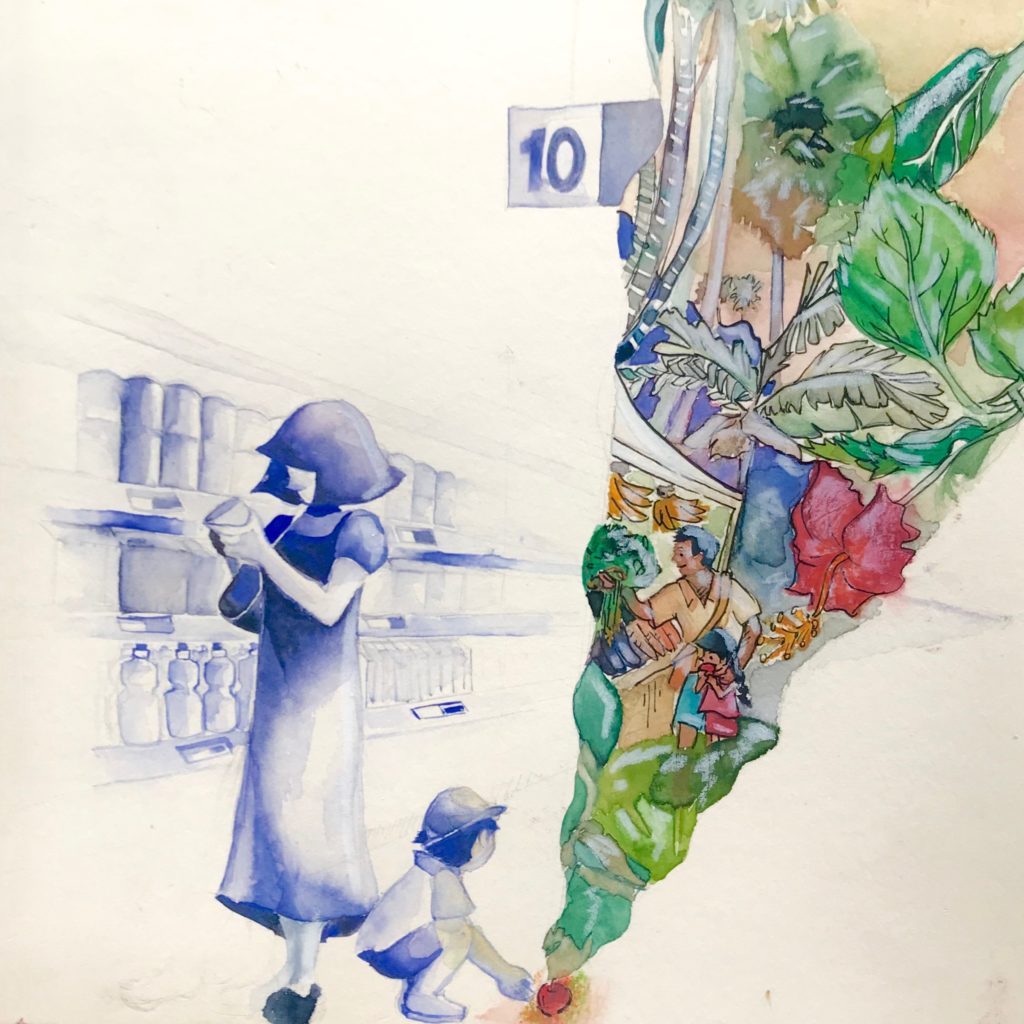


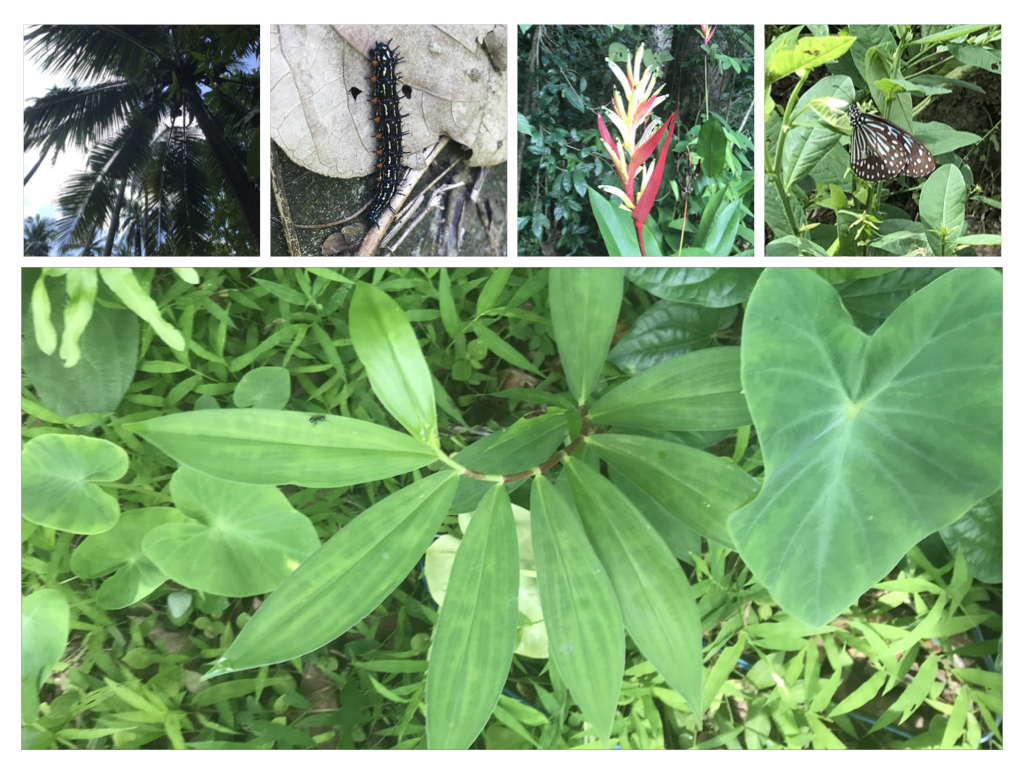


















 I had never seen one before and I was instantly fascinated by the way these plants that automatically closes its leaves. How does it decide when to close its leaves? Furthermore, is this a smart plant, or an emotional plant, or a robot plant? I decided the former- this plant is smarter than other plants that can’t control their leaves and just sit there like nothing happened when touched. What intrigued me most was that it felt like communication. And so, I started to look for other elements of non-human natural behavior in this environment that felt like communication. I started by exploring how to express this system of harnessing naturally smart things for our own digitally built “smart” environment. I decided to build a prototype of a natural to digital communication system in which a sensor would collect data from the mimosa or other “naturally smart thing”. This data would be transmitted via bluetooth to a human-made device that activates in response to incoming communication signals. Somewhat like this diagram:
I had never seen one before and I was instantly fascinated by the way these plants that automatically closes its leaves. How does it decide when to close its leaves? Furthermore, is this a smart plant, or an emotional plant, or a robot plant? I decided the former- this plant is smarter than other plants that can’t control their leaves and just sit there like nothing happened when touched. What intrigued me most was that it felt like communication. And so, I started to look for other elements of non-human natural behavior in this environment that felt like communication. I started by exploring how to express this system of harnessing naturally smart things for our own digitally built “smart” environment. I decided to build a prototype of a natural to digital communication system in which a sensor would collect data from the mimosa or other “naturally smart thing”. This data would be transmitted via bluetooth to a human-made device that activates in response to incoming communication signals. Somewhat like this diagram: